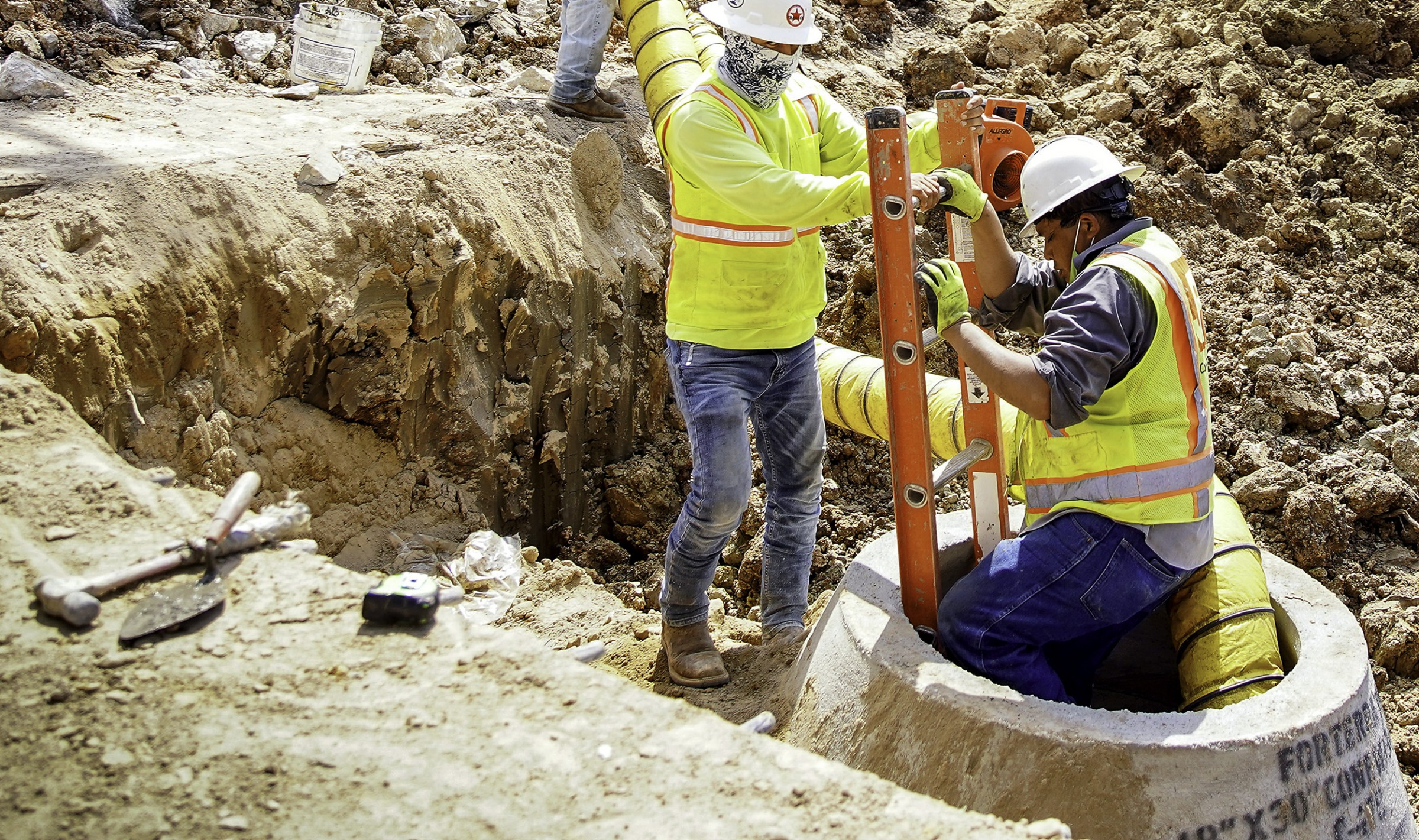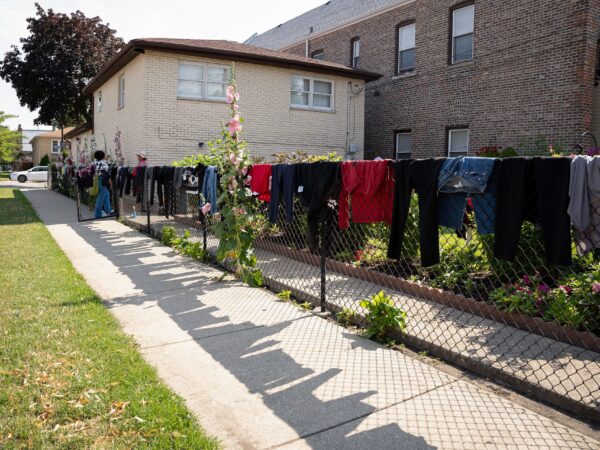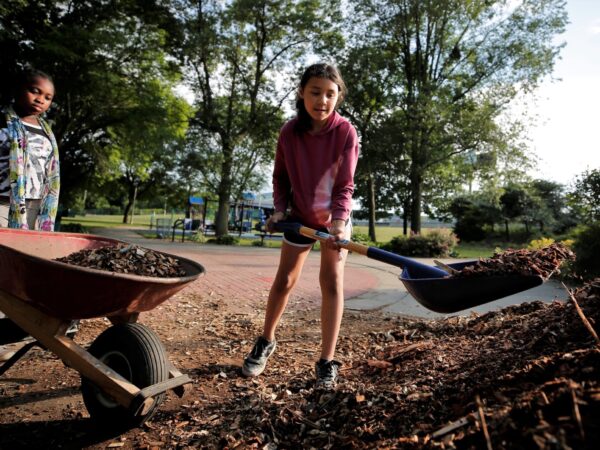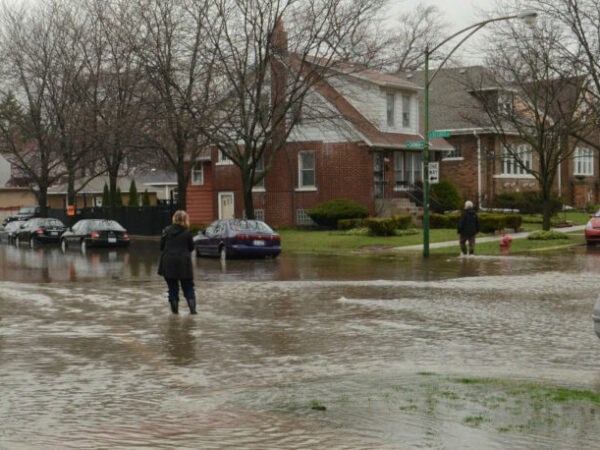
By Brett Walton, Circle of Blue
The Great Lakes News Collaborative includes Bridge Michigan; Circle of Blue; Great Lakes Now at Detroit Public Television; and Michigan Radio, Michigan’s NPR News Leader; who work together to bring audiences news and information about the impact of climate change, pollution, and aging infrastructure on the Great Lakes and drinking water. This independent journalism is supported by the Charles Stewart Mott Foundation. Find all the work HERE.
- The American Rescue Plan Act includes $350 billion to assist states, tribes, territories, and local governments in responding to financial challenges wrought by the pandemic.
- Water infrastructure improvements are one of four broad spending categories authorized by the act.
- It is clear that ARPA will have a far reach. Plus, funding is not just going to large, multimillion-dollar projects.
The sewer system needed so much repair work that Brad Cradeur wasn’t sure how – or when – he would have enough money for it all.
Cradeur is the executive director of Iberia Parish Sewerage District No. 1, which serves several thousand residents in Iberia Parish, located on the Louisiana coast. Sewer pipes needed new liners to prevent groundwater from seeping in. Lift stations and treatment plant equipment like aerators and clarifiers were also due for an upgrade.
The sewerage district takes in enough revenue to operate the system but not enough for major reinvestments. Saving several million dollars for the capital improvements would take the district a decade or two, Cradeur reckoned.
Fortunately, the sewerage district doesn’t face that decision any more. To complete the sewer work, the district will receive $5.7 million in federal grants channeled through state and parish governments.
“It’s huge,” Cradeur told Circle of Blue. “It really allows us to do monumental overhauling that we’d have to budget for years to do.”
The American Rescue Plan Act — the relief bill that President Joe Biden signed into law on March 11, 2021 — set aside $350 billion to assist states, tribes, territories, and local governments in responding to financial challenges wrought by the pandemic. Water infrastructure improvements like the ones that Iberia Parish Sewerage District No. 1 will make are one of four broad spending categories authorized by the act.
Since ARPA became law nearly a year ago, government agencies have been determining how to divide their share of the pie. Many are putting — or are planning to put — significant resources into their water systems, a cash infusion meant to revitalize aging pipes and treatment facilities.
According to a database compiled by the National Conference of State Legislatures, states, territories, and Washington, D.C. have already dedicated at least $10.1 billion in ARPA funds to water systems.
That figure sets a floor for the financial impact of the American Rescue Plan Act. It does not include spending by local governments, which are likely to channel a large portion of their windfall into water infrastructure. A survey of local government leaders conducted in September 2021 found that water and sewer systems were a priority for three-quarters of respondents.
And it does not include states that have not finalized their spending plans. The Michigan Senate, for instance, passed a bill on December 2, 2021, that would allocate $970 million in state coronavirus funds to water infrastructure. The Michigan House has yet to vote on the measure.
President Biden intended the Infrastructure Investment and Jobs Act, which he signed into law on November 15, 2021, to be one of his signature legislative victories, a “once-in-a-generation” investment in the systems that move people, water, information, and energy around the country’s vast and intimate spaces. The infrastructure act provided $55 billion for water, sewer, and stormwater systems, plus another $8.3 billion to respond to drying conditions in the American West.
The American Rescue Plan Act probably will not reach that level, even though final numbers for water infrastructure spending won’t be known for a few years. According to the act, funds must be committed to a project by December 31, 2024 and spent by December 31, 2026.
But even today, it is clear that ARPA will have a long reach.
- California used $301 million to pay off the water bills of low-income residents who fell behind during the pandemic. The state set aside as much as $985 million to forgive customer debt and it is now accepting applications from wastewater utilities.
- Montana allocated $462.7 million to water and sewer infrastructure.
- Louisiana allocated $300 million.
- Kentucky and Ohio allocated $250 million.
Funding is not just going to large, multimillion-dollar projects. Maine dedicated $102,968 to provide free well water testing for low-income households. Oregon put $500,000 toward building fish bypasses at dams.
Even within Montana’s large water and sewer allotment there are small recipients. Kevin Flynn is the water plant operator for Eureka, a northwestern Montana town of about 1,400 people just south of the Canadian border. Eureka received a grant of $247,056 that will cover just under half the cost of replacing a 50-year-old water main in town.
The grant “gives us a chance to do it,” Flynn told Circle of Blue. Would the main have been replaced without the funds? “Probably not,” he said.
That sort of restorative work will be completed in Iberia Parish, where American Rescue Plan Act funds are covering the entire $5.7 million sewer overhaul.
Cradeur lists three main areas of work. One is system renewal. The district will reline sewers in nine subdivisions where groundwater is infiltrating the pipes. It will also replace some of its 82 pump stations, which are the machinery that keeps sewage flowing through the pipes.
A second priority is disaster preparation. Coastal Louisiana is no stranger to severe weather, with Category 4 hurricanes Laura and Ida hitting the state in the last two years. Cradeur intends to add 16 backup generators that can provide emergency power when the electrical grid is knocked out.
The district’s current supply of 10 generators is insufficient, Cradeur said. In past storms, district workers have relied on pump trucks to vacuum sewage when lift stations failed. Or they moved the generators around the parish, but Cradeur said that is a dangerous gambit during and after a hurricane, when floodwaters are treacherous.
The third category is improving the treatment plant, which came online in the 1970s, the same decade the Clean Water Act was signed into law.
Cradeur hasn’t been on the job that long — only three years with the sewerage district and six months as executive director. Still, he knows the importance of grant programs like those spawned by the American Rescue Plan Act for renewing rural infrastructure and keeping services affordable.
“We’re not sedentary,” Cradeur said, referring to the district’s active approach to locating outside funds. “We’re not ‘woe is me.’ We go after grants.”
Catch more news on Great Lakes Now:
Risky Drinking Water Pathogen Has Outsized Effect on Black Americans
Even in water-rich Michigan, no guarantee of enough for all
Featured image: Contractors for Houston Public Works install a wastewater and drainage project in the Greater Eastwood neighborhood in this file photo from 2020. Communities across the country are choosing to use federal pandemic relief dollars for pipe repairs, infrastructure upgrades, and other water system needs. (Photo Credit: Elizabeth Conley/Circle of Blue)




